Comparison of Habitat, External Features, and Anatomy of Herdmania and Branchiostoma
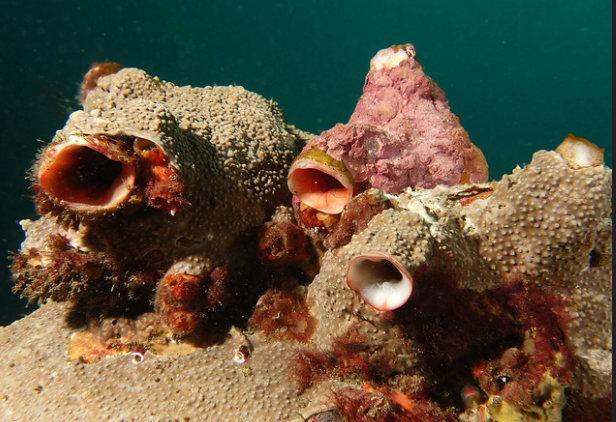
Herdmania and Branchiostoma, both members of the phylum Chordata, represent distinct subphyla—Urochordata and Cephalochordata, respectively.
Despite sharing the chordate characteristics, such as a notochord at some stage of their life cycle, these two organisms differ significantly in their habitat preferences, external features, and internal anatomy. This comparison highlights the differences and similarities between these two organisms.
Herdmania, a member of the class Ascidiacea in the subphylum Urochordata. Branchiostoma, commonly known as the lancelet.
Classification of Hardmania (Urochordata)
- Kingdom: Animalia
- Phylum: Chordata
- Subphylum: Tunicata (Urochordata)
- Class: Ascidiacea
- Order: Stolidobranchia
- Family: Pyuridae
- Genus: Hardmania
- Species: Includes several species (e.g., Hardmania momus)
Classification of Branchiostoma (Cephalochordata)
- Kingdom: Animalia
- Phylum: Chordata
- Subphylum: Cephalochordata
- Class: Leptocardii
- Order: Amphioxiformes
- Family: Branchiostomidae
- Genus: Branchiostoma
- Species: Includes species like Branchiostoma lanceolatum (the lancelet).
Habitat
Habitat of Herdmania (Urochordata)
It is a marine organism commonly found in shallow coastal waters. It typically inhabits rocky substrates at depths ranging from 9 to 21.6 meters. Herdmania is often associated with environments like tide pools and areas where the water flow is moderate to strong. These regions are abundant with planktonic organisms, which Herdmania feeds on.
Herdmania is a sessile organism, meaning that it remains permanently attached to its substrate through a specialized basal attachment structure. As a result, it is immobile and lives in a fixed location for the majority of its adult life.
The animal’s body is often covered by various organisms such as algae, sponges, and hydroids, providing it with camouflage from predators. Herdmania uses its siphons to draw in water for filter feeding and to expel waste and water, contributing to its stationary lifestyle.
Habitat of Branchiostoma (Cephalochordata)
It prefers sandy or muddy substrates found in shallow marine environments. It is typically found in areas where the sediment is soft enough to allow the organism to burrow partially into the substrate. Branchiostoma is commonly found in coastal regions where it burrows into the sand with only its anterior end exposed to the surrounding water.
Branchiostoma is a burrowing organism, which allows it to remain hidden from predators while feeding on plankton and other small organic particles suspended in the water. Unlike Herdmania, which is sessile, Branchiostoma is mobile to some extent and can swim short distances. The animal uses its burrowing behavior as a defense mechanism against predators and to optimize its filter-feeding capabilities.
External Features
External Features of Herdmania
The body of Herdmania is generally oval to potato-like in shape, and it is typically pink or reddish in color. The color may vary depending on environmental factors and the presence of symbiotic organisms such as algae. The surface is leathery and covered by a tunic, a protective outer layer composed of a material called tunicin, which is chemically similar to cellulose. The tunic provides structural support and protection from predators and environmental stress.
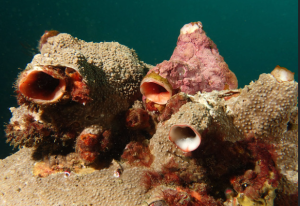
Source – Flicker
Uncommon amino acids- Click here
Siphons of Hermania
They are tubular structures found in certain aquatic organisms that facilitate the movement of water or fluids into or out of their bodies. Siphons play crucial roles in feeding, respiration, locomotion, and excretion, depending on the organism.
Herdmania possesses two main siphons—the branchial siphon and the atrial siphon. The branchial siphon is relatively short and serves as the opening through which water enters for feeding, while the atrial siphon is longer and serves as the exit for the water after it has passed through the organism’s filter-feeding system.
The branchial siphon is located at the anterior end of the body, while the atrial siphon is located at the posterior end.
External Features of Branchiostoma
Branchiostoma has a distinctive lanceolate (lance-shaped) body, which is laterally flattened and measures approximately 5 to 8 cm in length. Its body tapers at both ends, with a pointed anterior and a slightly more rounded posterior end. The body is transparent, often exhibiting a pale blue or translucent hue, which helps it blend into its sandy or muddy environment.

Source – Wikipedia Commons
The body of Branchiostoma is divided into several distinct regions, including the rostrum (snout), oral hood (which contains tentacles), trunk, and postanal tail. The rostrum serves as a sensory structure, and the oral hood contains cirri, which are small, stiff, hair-like projections that assist in capturing plankton and small particles during feeding.
Musculature of Branchiostoma
One of the most notable external features of Branchiostoma is its segmented musculature, known as myotomes. These blocks of striated muscle fibers run along the length of the body, separated by connective tissue called myocommas. The presence of myotomes enables the lancelet to execute undulatory swimming movements, although it remains largely sedentary while burrowed in the sand.
Anatomy
Anatomy of Herdmania
Internal Structure: Herdmania’s internal anatomy is relatively simple compared to that of more complex chordates. It possesses a rudimentary digestive system, which includes a pharynx lined with gill slits. These gill slits are used for filter feeding, allowing Herdmania to capture plankton and organic matter from the water as it flows through the body. Water enters through the branchial siphon, passes through the pharynx, and exits through the atrial siphon. This simple system is efficient for its sessile lifestyle, allowing it to feed without the need for locomotion.
Reproductive System: Herdmania is hermaphroditic, meaning it possesses both male and female reproductive organs. Fertilization occurs externally, with eggs and sperm released into the surrounding water. Fertilization takes place outside the body, and the resulting larvae are free-swimming tadpoles. These larvae undergo retrogressive metamorphosis, where they lose their tail and develop into the adult form. The adult Herdmania then attaches itself to a substrate and becomes sedentary.
Anatomy of Branchiostoma
Internal Structure: Branchiostoma has a more complex internal anatomy compared to Herdmania. It possesses a notochord, which extends throughout the length of the body and provides structural support. The notochord is a characteristic feature of all chordates, though in vertebrates, it is replaced by the vertebral column during development.
Branchiostoma also has a dorsal nerve cord, which is located above the notochord and functions as the primary neural control system. Pharyngeal gill slits are present and serve both for respiration and filter feeding, similar to Herdmania.
Digestive System: The digestive system in Branchiostoma is well-developed, with a distinct mouth located at the anterior end. The mouth leads to a pharynx with gill slits, which facilitates the passage of water and small particles to the gut. The gut is relatively simple, with an intestine that extends from the pharynx to the anus at the posterior end.
Circulatory System: Unlike Herdmania, which has a simple circulatory system, Branchiostoma has a more developed circulatory network. Branchiostoma lacks a heart but has a network of blood vessels that help circulate nutrients and gases throughout the body. This system is sufficient to meet the metabolic needs of the lancelet,
The reproductive system of Branchiostoma is simple, with separate sexes (gonochorism) but no visible differences between males and females. Multiple paired gonads, arranged segmentally along the body wall, are sac-like structures containing germ cells. These gonads lack ducts, so gametes are released into the atrial cavity and expelled into the seawater through ruptures in the gonadal walls.
Fertilization is external, occurring in the surrounding water. The zygote develops into a free-swimming larva with key chordate features like a notochord and pharyngeal slits. After a planktonic phase, the larva undergoes metamorphosis into an adult, which settles in the sand. This simple reproductive system highlights Branchiostoma’s primitive position among chordates.
which primarily relies on diffusion for gas exchange.
Reproductive System:
Muscular System and Locomotion Branchiostoma and Herdmania
One of the key differences between Branchiostoma and Herdmania lies in the complexity of the musculature. The body of Branchiostoma contains myotomes that allow for more sophisticated locomotion. These muscle blocks are organized into segments along the length of the body and enable undulatory swimming movements when the organism needs to move. The myotomes are separated by myocommas, and this arrangement provides efficient muscle contraction for swimming, even though Branchiostoma is typically more sedentary than mobile.
Differences Between Hardmania and Branchiostoma:
| Feature | Hardmania (Urochordata) | Branchiostoma (Cephalochordata) |
|---|---|---|
| Lifestyle | Sessile (attached to substrate) | Free-living, burrows in sand |
| Notochord | Present only in larval stage | Present throughout life |
| Circulatory System | Simple, heart-like structure | Closed system, no true heart |
| Reproductive Strategy | Hermaphroditic | Separate sexes |
| Ecological Role | Filter feeder | Filter feeder and prey for predators |
Read also –
- Herdmania on Wikipedia
- Animal Diversity Web: Herdmania
- Revision of the Ascidian Genus Herdmania (Research Article)
- Branchiostoma on Britannica
- Branchiostoma Anatomy – Lander University
Hi, I’m Hamid Ali, an MSc in Biotechnology and a passionate Lecturer of Biology with over 11 years of teaching experience. I have dedicated my career to making complex biological concepts accessible and engaging for students and readers alike.
Beyond the classroom, I’m an avid blogger, sharing insights, educational resources, and my love for science to inspire lifelong learning. When I’m not teaching or writing, I enjoy exploring new advancements in biotechnology and contributing to meaningful discussions in the scientific community.
Thank you for visiting my blog! Feel free to connect and explore more of my work.




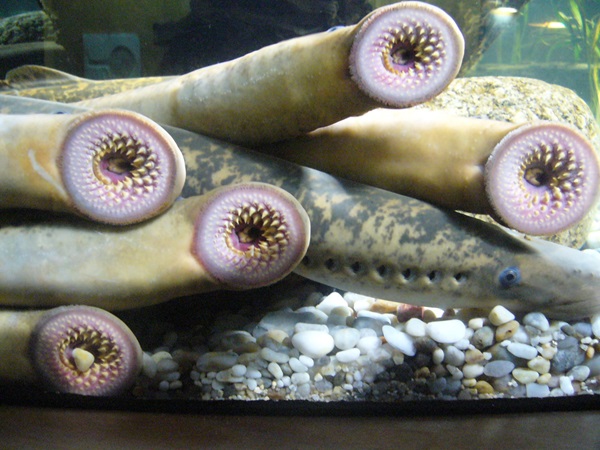
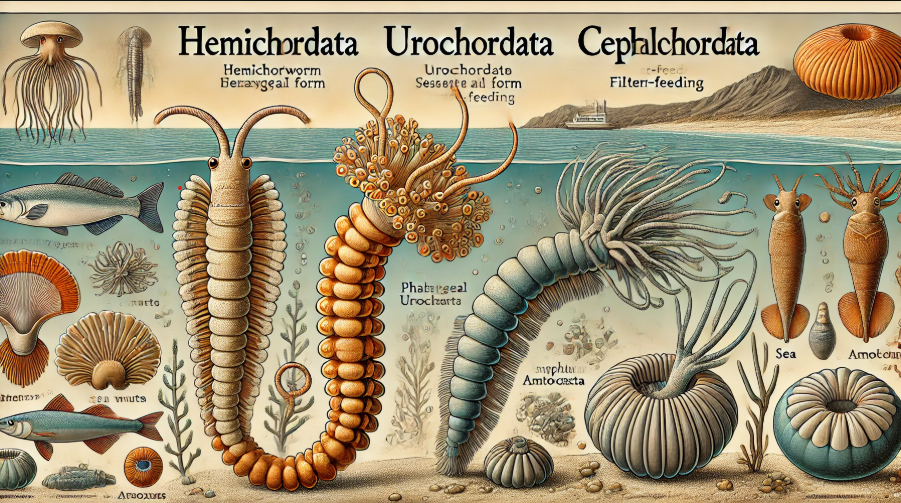
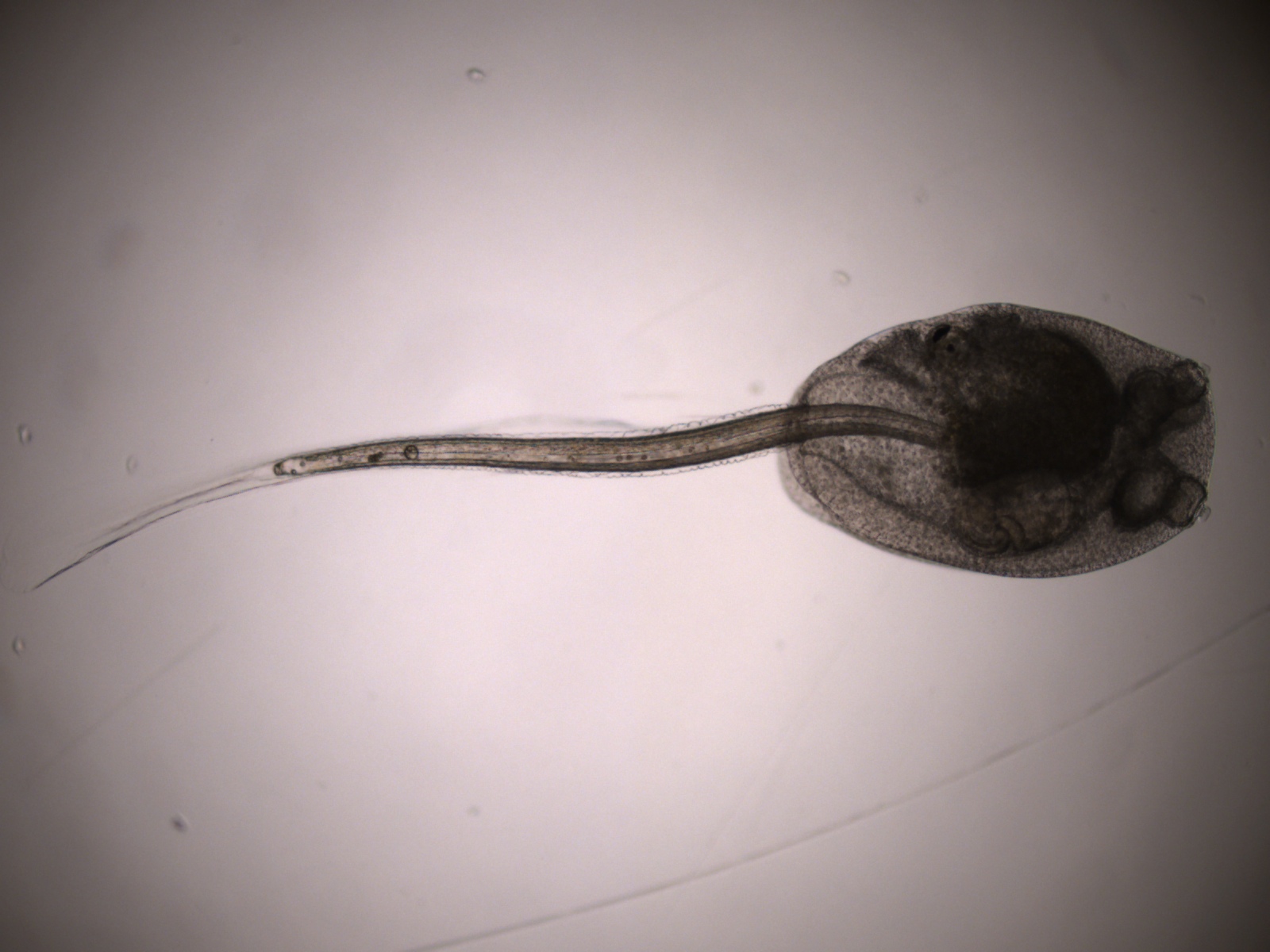
[…] Comparison of Habitat, External Features, and Anatomy of Herdmania and Branchiostoma – Click here […]